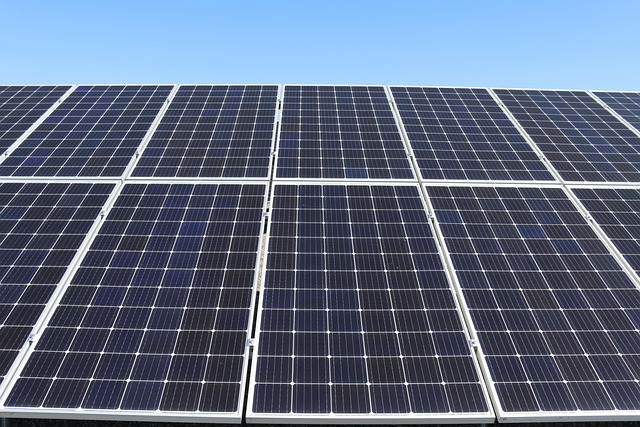Industrial warehouses offer ideal conditions for large-scale solar installations, turning vast unused roofs into powerful energy assets. Solar power cuts electricity costs, reduces carbon footprints, and boosts energy independence. With financial incentives and advances in technology, integrating solar solutions is becoming both practical and profitable, reshaping warehouse operations toward a sustainable and cost-effective future.
Harnessing Solar Power in Industrial Warehouses: An Overview
Solar Panels for Warehouses play a pivotal role in transforming energy consumption within industrial settings. Warehouses often feature extensive, flat roofs with unused space, making them ideal for solar panel installation. These panels enable businesses to cut energy costs significantly by generating electricity on-site, reducing reliance on grid power, and supporting environmental goals.
Topic to read : How Can UK Businesses Innovate to Survive in a Competitive Market?
Different types of solar panels, such as battery-led systems, enhance operational resilience by storing excess energy for later use. Their installation is often straightforward, with minimal disruption, especially on flat roofs that typically require no planning permission. Large-scale systems can recover costs in as little as 4 years and offer lasting savings while reducing carbon footprints.
Insights from the recent review highlight the importance of optimizing solar panel placement and considering government incentives and financing options. Achieving high efficiency while maintaining durability is central to maximizing overall ROI.
Also to read : How Does the UK Business Landscape Shape Future Opportunities?
Types of Industrial Solar Panels and System Designs
Battery-Led and Efficient Solar Panel Technologies
Industrial rooftop solar solutions leverage advanced battery-led solar panels to maximize warehouse energy efficiency. These integrated systems store surplus electricity, ensuring power availability during peak warehouse energy consumption, overnight, or grid outages—enhancing the operational independence of large-scale solar systems for storage facilities. The best solar panels for large buildings are engineered for optimal power output, combining high efficiency with robust construction designed to handle the challenging industrial environment. Solar panel durability in warehouses is critical: panels are selected for resistance to dust, temperature fluctuations, and vibrations common in industrial settings, with warranties often spanning two decades or more. Pairing solar panels with dependable energy storage options allows businesses to optimize self-consumption and reduce dependence on grid electricity, further supporting renewable energy for industrial buildings.
Custom System Design and Performance Optimization
Designing solar power systems for warehouses begins with a critical engineering assessment of rooftop structures, evaluating both shading and structural load. Optimizing solar panel placement and tilt is essential for extracting the highest performance from industrial rooftop solar solutions. Advanced modeling simulates energy yield under real-world conditions, ensuring warehouse energy efficiency meets projections. A seamless integration of solar installations with warehouse electrical systems supports existing and future energy demands—including large-scale solar systems for storage facilities—and aligns with broader warehouse sustainability initiatives by enabling ongoing reduction in operational costs and carbon emissions.
Cost, ROI, and Financial Incentives for Warehouse Solar Projects
Cost Breakdown and Payback Period
For most warehouse operators, the initial investment in industrial solar energy solutions is recouped rapidly through reduced operational costs. The bulk of expenses arises from the commercial solar panel installation, system components, and necessary electrical integration. However, thanks to technological advances and economies of scale in large-scale solar systems for storage facilities, overall costs have fallen substantially. Typical payback periods for warehouse solar projects range from three to five years, driven by significant savings in electricity costs and decreased reliance on grid power. The expected lifespan of industrial solar systems often exceeds 25 years, ensuring continued long-term savings. Solar panel durability in warehouses provides reliable performance with minimal maintenance, aided by remote monitoring and robust warranties.
Financial Support, Incentives, and Funding Options
Numerous government incentives are available to facilitate renewable energy for industrial buildings, making the switch accessible even for those with tight budgets. Businesses can benefit from direct grants, government incentives solar for businesses such as Enhanced Capital Allowances, or lucrative tax credits linked to solar energy adoption. Flexible commercial solar financing options include leasing, power purchase agreements (PPAs), and tailored loan packages, enabling low- or no-upfront-cost adoption. Comparing buying versus leasing, direct ownership often maximizes return on investment industrial solar over the long term, while leasing reduces financial risk and upfront obligations. This broad choice empowers warehouse owners to strategically enhance warehouse energy efficiency and achieve rapid payback.
Installation, Maintenance, and Performance Monitoring
Installation Process and Structural Considerations
Warehouse energy efficiency starts with a rigorous assessment of roof integrity and orientation, ensuring suitability for large-scale solar systems for storage facilities. Structural evaluations address both the overall condition and required modifications—key for secure commercial solar panel installation. Most industrial rooftop solar solutions utilize warehouse rooftops that rarely need changes unless prior damage or insufficient structural support is detected. Permitting and design planning streamline the installation process, with clear timelines for deploying renewable energy for industrial buildings.
Ongoing Operations, Maintenance, and Performance Monitoring
Once installed, solar panel maintenance for warehouses ensures longevity and output. Routine inspections focus on panel cleanliness and hardware functionality, as even minor debris can impact solar panel efficiency for commercial rooftops. Remote solar power monitoring tools for warehouses detect fluctuations and identify faults, allowing managers to optimize performance. Many agreements provide robust warranties and troubleshooting guidance, contributing to the return on investment for industrial solar and operational stability.
Challenges and Solutions
Common challenges of solar installation in large warehouses include shading, unusual roof layouts, or weak structural substrates. Approaches like optimizing solar panel placement in warehouses and reinforcing weak roof sections address these hurdles. Upgrades can be coordinated alongside installation, safeguarding both solar power benefits for logistics centers and long-term durability. The integration of energy management for industrial sites further enhances resilience, ensuring efficient warehouse sustainability initiatives.











